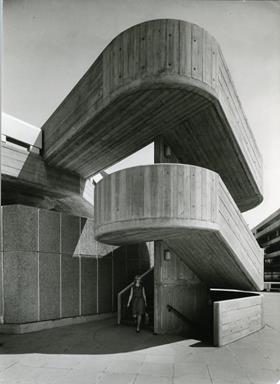‘Integrity of listing system at stake’
The Twentieth Century Society has appealed against the government’s decision not to list the Southbank Centre, a decision which sparked anger and bemusement in architecture and heritage circles.
The minister, Michael Ellis, over-ruled his own advisers, Historic England, last week and turned the cultural complex down for the fourth time saying there were “strong arguments” on both sides.
This prompted the Victorian Society to tweet: “Absurd that SouthBankCentre has been turned down for listing by @DCMS. Scandalous that @southbankcentre has spent money on consultants to trash the value of its own building. Significance of the building beyond doubt; integrity of the listing system is at stake.”
Absurd that SouthBankCentre has been turned down for listing by @DCMS . Scandalous that @southbankcentre has spent money on consultants to trash the value of its own building. Significance of the building beyond doubt; integrity of the listing system is at stake @C20Society
— The Victorian Society (@thevicsoc) June 5, 2018
And architectural historian Otto Saumarez Smith tweeted the culture secretary – Ellis’ boss – asking: “On what grounds has your department allowed this incredibly disappointing decision? These are buildings of huge importance, carefully conceived and executed. Please give me the opportunity to open your eyes to their quality and historical significance.”
He added: “It is absurd and disgraceful that the Southbank Centre has been denied listing for the fourth time, especially after the sensitive recent refurbishment.”
@MattHancock; on what grounds has your Department allowed this incredibly disappointing decision? These are buildings of huge importance, carefully conceived and executed. Please give me the opportunity to open your eyes to their quality and historical significance.
— Otto Saumarez Smith (@OSaumarezSmith) June 5, 2018
The Southbank Centre used Montagu Evans to apply for the certificate of immunity from listing (COI) which the minister also granted – subject to any appeals. This is the process that C20 has now initiated.
In his decision notice, written by an aide, Ellis gave as one of his reasons for rejecting the listing application: “The building’s architecture is not unique or ground-breaking and is poorly resolved in terms of its relationship to the site, its coherence, and its accessibility in comparison to the Royal Festival Hall and the National Theatre.”

In C20’s rebuttal, senior conservation adviser Tess Pinto responded: “Historic England have written an extended report which sets out why the building is unique and ground-breaking. The minister has not given reasons for his decision regarding architectural interest, he has merely refuted the expert recommendation.”
The building’s relative significance to its neighbours should not be a material consideration, she added.
Ellis also claimed there were “contrasting views” on the building’s architectural interest but Pinto dismissed this as tenuous, remarking that this was true of many listed buildings.
The public’s views change over time as styles come in and out of fashion, she said, but “Historic England’s view, and our own as a specialist advisor to Historic England, is that the exterior and the interior are of national significance”.
The minister has not given reasons for his decision regarding architectural interest, he has merely refuted the expert recommendation
Tess Pinto, C20
Among the minister’s other reasons for refusal he wrote: “Though Ron Herron, Warren Chalk and Dennis Compton, all later members of the Archigram group, worked on the design of the building under the LCC chief architects in the late 1950s, evolution of the concept and design was a complex and lengthy process involving many different people at various times.”
But Pinto argued the fact that the building was designed collaboratively did not detract from its significance.
“In our consideration it contributes to it,” she added. “Many nationally designated buildings were built collaboratively, including many which are often attributed to a single architect. The architects listed here were some of the most daring thinkers of the 1960s, and this building is the only manifestation of their ideas of multi-layered and multi-functional buildings.”
Historic England said it would not appeal. A spokesperson said: “We recommended the building be listed but accept the minister’s decision to grant a certificate of immunity from listing. We act in an advisory role but as with all listing cases, the final decision lies with the minister.”













4 Readers' comments